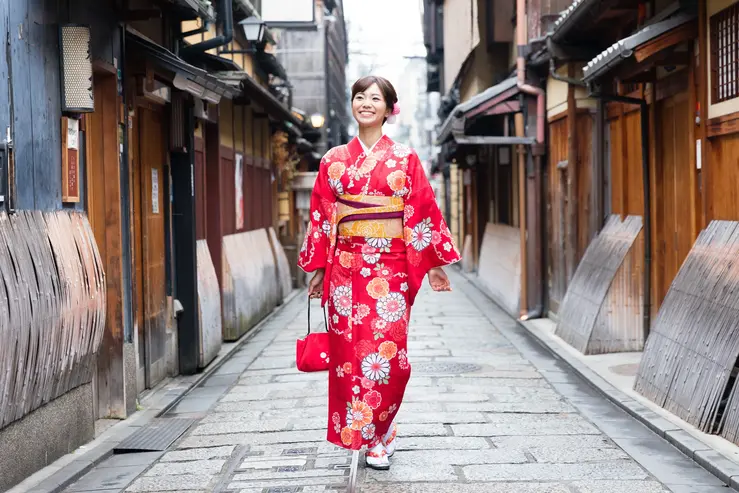Cultural dresses are a vibrant reflection of a country’s heritage and traditions. Here, we explore the traditional attire of 15 countries around the globe, each showcasing unique styles and histories.
1. Japan: Kimono
The kimono is a traditional Japanese garment known for its intricate designs and deep cultural significance. Kimonos are T-shaped, straight-lined robes that are wrapped around the body and secured with an obi (belt). They are often made from silk and worn during special occasions such as weddings, tea ceremonies, and festivals.
2. India: Sari and Sherwani
In India, traditional attire varies by region, but the sari is a prominent garment for women. A sari is a long piece of cloth, usually around six yards, that is draped elegantly around the body. Men often wear a sherwani, a long coat-like garment, typically paired with churidar (fitted trousers) for formal occasions and festivals.
3. China: Cheongsam and Hanfu
The cheongsam (or qipao) is a form-fitting dress for women with a high collar and side slits, originating from Shanghai. Hanfu, the traditional dress of the Han Chinese, features flowing robes with wide sleeves and is often worn during cultural celebrations and historical reenactments.
4. South Korea: Hanbok
The hanbok is a traditional Korean dress characterized by vibrant colors and simple lines without pockets. The women’s hanbok consists of a jeogori (jacket) and chima (skirt), while the men’s hanbok comprises a jeogori and baji (pants). Hanbok is worn during traditional festivals and ceremonies like weddings.
5. Mexico: Charro Suit and Huipil
In Mexico, the charro suit is a traditional attire for men, often seen during celebrations and charreadas (Mexican rodeos). Women commonly wear the huipil, a loose-fitting tunic adorned with intricate embroidery, reflecting indigenous Mexican heritage.
6. Nigeria: Agbada and Buba
Nigerian traditional attire is rich and varied. The agbada is a wide-sleeved robe worn by men over a long-sleeved shirt and trousers. Women often wear a buba (blouse) and iro (wrapper), complemented by a gele (head wrap). These garments are typically made from colorful fabrics and worn during special events.
7. Scotland: Kilt
The kilt, a knee-length skirt-like garment made of wool, is a symbol of Scottish heritage. It features tartan patterns specific to Scottish clans. Kilts are worn by men and are often paired with a sporran (pouch), kilt hose (socks), and ghillie brogues (shoes), especially during ceremonies and cultural festivals.
8. Greece: Fustanella and Amalia Dress
The fustanella is a traditional skirt-like garment for men, with origins in ancient Greece. It is part of the traditional costume worn by Evzones (Greek guards). The Amalia dress, named after Queen Amalia, is a traditional women’s costume featuring a long, pleated skirt and a short, richly embroidered jacket.
9. Russia: Sarafan and Kokoshnik
The sarafan is a traditional Russian dress for women, often worn over a blouse and featuring a long, flowing silhouette. It is commonly paired with the kokoshnik, a decorative headpiece. For men, the kosovorotka, a long-sleeved shirt, is traditional attire, especially during folk celebrations.
10. Spain: Flamenco Dress
The flamenco dress, or traje de flamenca, is a colorful and ruffled dress worn by women, especially during flamenco performances and festivals like the Feria de Abril in Seville. Men often wear the traje corto, a short jacket and high-waisted trousers, during traditional events.
11. Turkey: Kaftan and Fez
In Turkey, the kaftan is a traditional garment with a long history, often worn during special occasions. It is a long, buttoned coat made of rich fabrics. The fez, a red cylindrical hat, is also part of traditional Turkish attire for men.
12. Brazil: Baiana Dress
The Baiana dress, originating from the state of Bahia, is a symbol of Afro-Brazilian culture. It consists of a white blouse with lace details, a long skirt, and a head wrap. This attire is commonly worn during cultural and religious festivals, such as the Carnival.
13. Vietnam: Áo Dài
The áo dài is a traditional Vietnamese dress featuring a long tunic with slits on the sides, worn over trousers. It is worn by both men and women, though the styles differ slightly. The áo dài is typically made of silk and is worn during formal occasions and festivals.
14. Germany: Dirndl and Lederhosen
The dirndl is a traditional dress for women in Germany, especially in Bavaria. It consists of a bodice, blouse, full skirt, and apron. Men traditionally wear lederhosen, leather shorts with suspenders, often seen during Oktoberfest and other folk festivals.
15. Morocco: Djellaba and Caftan
In Morocco, the djellaba is a long, loose-fitting robe with a hood, worn by both men and women. The caftan, a more elaborate garment, is often worn by women during special occasions and celebrations. These garments are usually made of lightweight fabrics suitable for the Moroccan climate.
Conclusion
Traditional attire from around the world showcases the rich cultural heritage and unique identity of each country. From the elegant kimono of Japan to the vibrant Baiana dress of Brazil, these garments not only celebrate history and tradition but also continue to play a significant role in modern cultural expressions. Whether worn daily or during special occasions, cultural dresses remain a cherished part of the world’s diverse tapestry.

